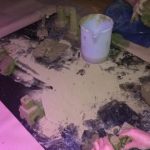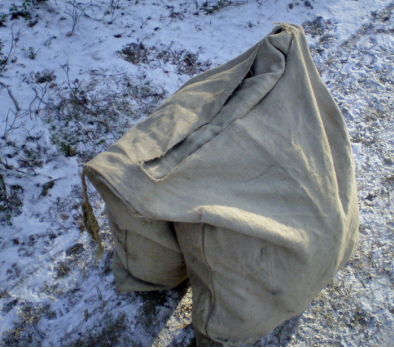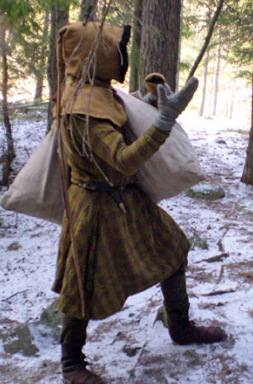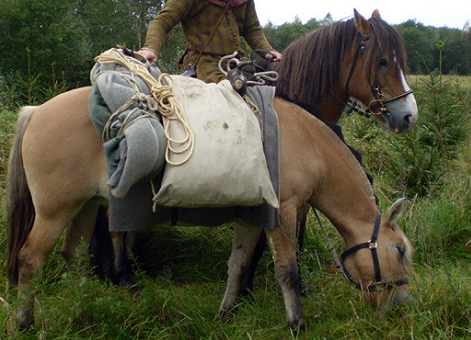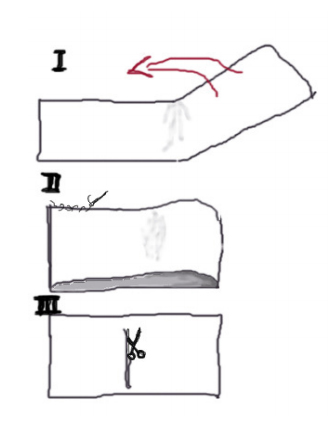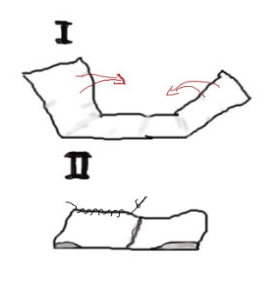
This chest is dated to 15:th century but is of a form commonly used in the 14:th century. The chest has probably seen use as a vestment coffer, serving as storage for the priestly wardrobe. It is made out of oak and relies on square plugs in round holes to keep the parts in place.
The body of the chest
The front of the chest is based on the ‘legboards’. These are probably slotted and the three face boards slid down the slots. The upper and lower plank is then plugged in place.

Red arrows denote these plugs in the picture, the green/yellow shows the sidebeams that are described below
The front and back are joined together by side beams that are slotted into the legboards and plugged into these with a plug driven in diagonally from the side of the board.

Seen here is the inside of the sidebeam as it is slotted into the legboard. The plug on the inside has been left ‘unpruned’
Between the horizontal beams vertical ones are inserted to stabilise and distance them (see picture above). On the inside of the beams ordinary planks form a wall. How these are fastened I do not know.
The Bottom
The lower face and backplank has a ‘shelf’ cut into them as well as the legboards. The bottom planks rest against the shelf and a beam running over the middle. The beam is haphazardly plugged into the front and back with uncut plugs.

The shelf and underlying beam
Other chests from the same age have two beams under the bottom but this particular one sport just the single one.
The lid
The lid is made of planks attached to an underlying beam on the shortsides. This is so short it passes down between the frontboard and backboards.

The lid, marked red. This picture shows how the beam fits into the chest body
The hinges are made of iron and is attached to the inside of the lid and the backside of the chest. On other chests of the same construction the hinges are mostly on the inside in both fastenings.
Final comments
This document does not have any measurements as it is only to show the way the chest was built. A guess of its size would be that it is about 1,60 m long, about 0,5 deep and 0,90 high. The boards may have been glued as well as plugged, Although it does not seem likely. Since we could not open the chest some details of construction is still a mystery.

The boards to be slotted into others are generally cut in an easy way, as shown on this simple rendering. It is cut by sawing, rather than by using an axe or another edged tool
Even if this is a chest that was used in a church, pictures from the time tells us it was also in secular use.
Appendix

This picture taken by Thomas Hagaeus of a chest in Transylvania, prob. 14:th century, shows how the planks are fitted into the beams

Other chests of similar construction from the National historical museum, Sweden
This article, by Johan Käll, was previously published on our old webpage.

